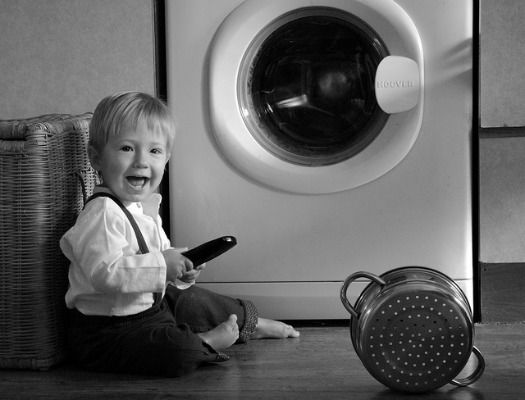A few days ago, one of our eight month old twins woke up with a new talent: shaking his head “no.” This was something we had seen him do as a soothing technique as he drifted off to sleep, but when he started doing it sitting up right in the daylight, he was rewarded with thunderous applause and many giggles from his family.
As we delighted in this cute baby performance, I noted to myself that in a few months, he and his brother both will be exerting their toddler-tastic independence, shaking their heads and maybe even saying “no” far more often than we would like. Knowing this day is on the horizon doesn’t exactly thrill my soul.
Toddlerhood is not my favorite season of parenting.
Don’t get me wrong – I adore toddlers. Their newfound mobility and language and personality that bursts at the seams are endlessly endearing. As a parent, however, toddlerhood is exhausting. It’s day after day of discipline.
Does that sound harsh, the concept of daily discipline? If you associate the word “discipline” with “punishment,’ then that would absolutely sound harsh. The word “discipline,” however, shares its roots with the word “disciple,” so the connotation there is the idea of teaching.
And that’s what I mean when I say that toddlerhood is day after day of discipline. Parenting a toddler is the practice of teaching a little one – all day, every day.

So, when we talk about discipline for toddlers, what does that look like lived out in the real world? I’m certainly no expert, having survived those trials by fire only twice, but today I would love to start the conversation here by sharing some of what has worked the best for us:
1. Establish firm, consistent boundaries
A toddler is taking her very first unsteady steps towards independence from you, her parents. This is both thrilling and terrifying for little ones. One of the best ways we can help them is teaching them where the boundaries are in the environments they share with us.
Toddlers thrive on predictability, so as much as possible, stick to the boundaries that have been set. This won’t stop them from testing the boundary lines you have marked. But even if their outward behavior doesn’t reflect it, they will find comfort in knowing that in a world that is filled with new discoveries every day, there are some things that never change.
2. Keep instructions simple
The day will come when you can have logical, thoughtful conversations with your children. Toddlerhood is not that day. It’s not even close to age-appropriate to expect a toddler to understand a logical explanation for your request.
This kind of teaching is short and sweet:
No biting. Biting hurts.
Chairs are for sitting.
Use gentle hands.
Feet in the grass.
Hold my hand.

3. Introduce (and allow) consequences
As a child moves fully into toddlerhood, the concept of cause-and-effect becomes more and more firm. This is a prime time to begin imposing logical consequences and allowing for natural ones as well.
For example, I had a “you hit, you sit” rule with my second daughter. If she hit another child, I removed her from the situation and made her sit with me until she was ready to return to playing. If she couldn’t play without hitting, the consequence was leaving fun times and sitting with boring old Mom.
Natural consequences are powerful teaching tools, too. After being asked to “use walking feet,” a toddler who is wobbly on his feet and keeps running may fall and skin his knee on the sidewalk. Though it’s difficult at times, try not to step in too often to interfere with the natural consequence of a toddler’s choice (unless, of course, their bodily safety is at risk).
4. Model desired behavior and give alternatives
What behavior is your toddler exhibiting that you want to change? How can you teach her an alternative?
If she is insistent on opening your cabinet full of kitchen appliances, remind her that that cabinet is “no touch,” but don’t stop there. Take her to a cabinet you have made safe just for her and call it her “yes touch” cabinet.
If hitting is the issue, remind him that “hitting hurts,” then hold his hand and demonstrate what a gentle touch feels like.
5. Give them words
Parenting pre-verbal and newly verbal children is endlessly frustrating – for both parents and little ones. I learned a technique in a parenting book I read years ago that encouraged parents to help their toddlers find and use the words to express their feelings.
In the midst of a meltdown, I might hold my toddler and say, “You are feeling sad. You are angry we had to leave the park.” I found teaching my older girls the sign language words to express these emotions was extremely helpful, too.

Ultimately, discipline for toddlers is intensive, exhausting work. It’s so important to pick your battles as well as committing to stand firm on the non-negotiables.
But all of that work pays off in the end! It really does, I promise. The foundations of discipline and relationship dynamics laid in toddlerhood build the firm foundation for smoother sailing as your little ones grow into Big Kids. The investments made today will pay dividends in the future that are well worth the hard work.
I know there are many reading who have much more experience in the realm of toddler parenting than I have! What advice can you share? And for parents in trenches today, what challenges and victories have you experienced lately?



